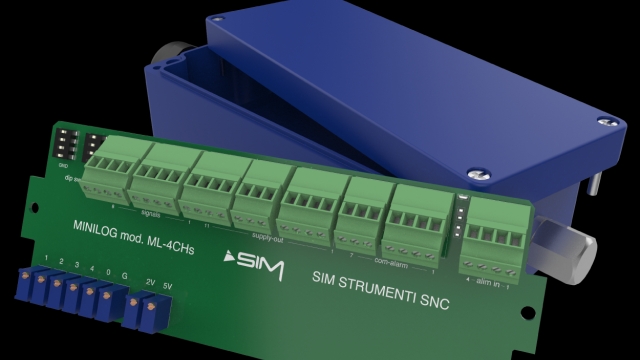
Unlocking Insights: The Power of Data Acquisition Systems

In today’s data-driven world, the ability to gather and analyze information has become essential for organizations across various industries. A Data Acquisition System serves as a vital tool in this process, enabling the collection of real-time data from diverse sources. With the rapid advancements in technology, these systems are evolving to provide more accurate and efficient ways to capture data that can drive decision-making and improve operational efficiency.
Data Acquisition Systems play a crucial role in a variety of applications, from scientific research and environmental monitoring to industrial automation and healthcare. By converting physical phenomena into digital signals, these systems empower users to monitor conditions, analyze trends, and unlock insights that were previously out of reach. Understanding the impact and functionality of Data Acquisition Systems is key for anyone looking to leverage data for strategic advantage.
Overview of Data Acquisition Systems
Data Acquisition System
Data Acquisition Systems, often referred to as DAS, serve as crucial tools for gathering, measuring, and recording data from various physical phenomena. These systems are widely used in numerous fields such as engineering, environmental monitoring, and medical applications. By converting analog signals from sensors into digital data, they enable users to analyze and interpret information effectively, facilitating decision-making processes based on accurate insights.
A typical Data Acquisition System consists of several components, including sensors, signal conditioning units, analog-to-digital converters, and data processing units. Sensors play a pivotal role as they detect changes in physical variables like temperature, pressure, and light. The signal conditioning units enhance the quality of the analog signals received from the sensors, ensuring that they are within the proper range for conversion. Finally, the processed digital data can be stored, visualized, or transmitted for further analysis, providing a comprehensive picture of the monitored environment.
The versatility of Data Acquisition Systems allows them to be tailored to specific applications, making them invaluable across diverse sectors. Whether in laboratory research, industrial automation, or healthcare, these systems help streamline operations and enhance productivity. As technology continues to advance, the capabilities of Data Acquisition Systems are evolving, paving the way for more efficient data collection and analysis, which is essential in today’s data-driven world.
Key Components and Technologies
A Data Acquisition System typically comprises several integral components that work together to capture and analyze data effectively. The primary element is the sensors, which are tasked with measuring various physical quantities such as temperature, pressure, and voltage. These sensors convert measurable phenomena into electrical signals that can be processed. Choosing the right type of sensor is crucial, as it directly influences the accuracy and reliability of the data collected.
Another essential component is the data acquisition hardware, which includes devices such as multiplexers, analog-to-digital converters, and signal conditioning units. These technologies help amplify, filter, and convert the incoming analog signals from sensors into digital form, making them suitable for further analysis. The role of the hardware is to ensure that data is not only collected but also refined and transformed into a format that can be easily interpreted by software systems.
Finally, data acquisition software plays a vital role in analyzing, visualizing, and reporting the collected data. This software provides the interface for users to configure the data acquisition process, set parameters, and visualize data in real-time. Advanced software solutions also enable users to automate data collection, perform complex analyses, and generate comprehensive reports. Together, the integration of sensors, hardware, and software is what empowers a Data Acquisition System to unlock valuable insights from raw data.
Applications and Benefits
Data acquisition systems have become essential tools across various industries due to their ability to collect, monitor, and analyze data in real-time. In manufacturing, these systems facilitate quality control by capturing data from sensors and machinery, allowing for immediate adjustments to optimize production processes. By implementing a data acquisition system, facilities can reduce downtime, minimize waste, and enhance overall efficiency, leading to significant cost savings and improved product quality.
In the field of environmental monitoring, data acquisition systems play a vital role in tracking parameters such as temperature, humidity, and air quality. These systems provide researchers and organizations with accurate and timely data, enabling them to make informed decisions about environmental protection and resource management. With the ability to integrate various sensors, data acquisition systems contribute to a more comprehensive understanding of environmental conditions and help in developing strategies for sustainability.
Moreover, in healthcare, data acquisition systems are instrumental in patient monitoring and diagnostics. They gather crucial information from medical devices and patient records, allowing for continuous observation of vital signs and other health metrics. This real-time data collection aids medical professionals in delivering timely interventions and enhancing patient outcomes. By leveraging the capabilities of data acquisition systems, healthcare providers can ensure a higher standard of care through accurate assessments and streamlined workflow processes.

